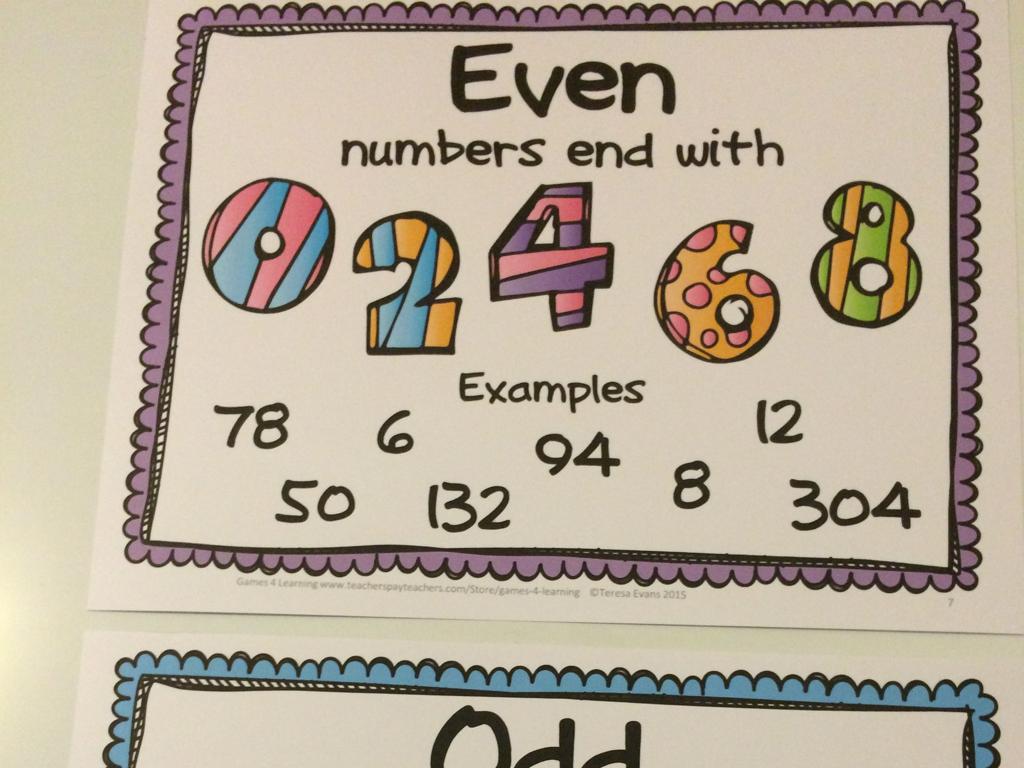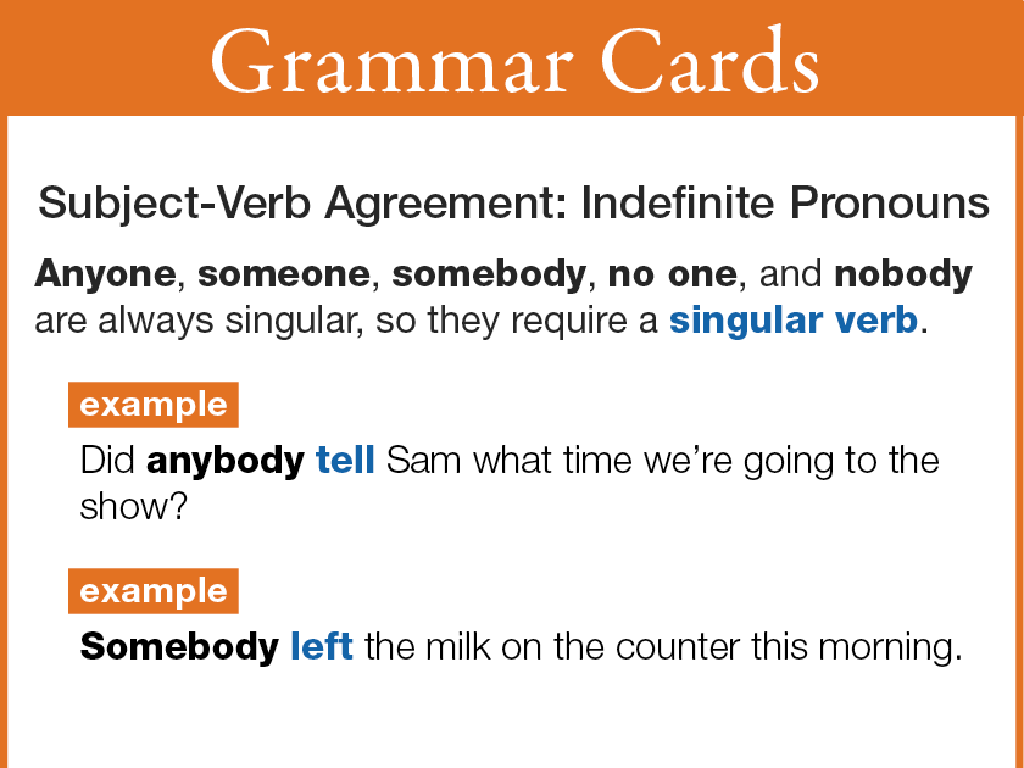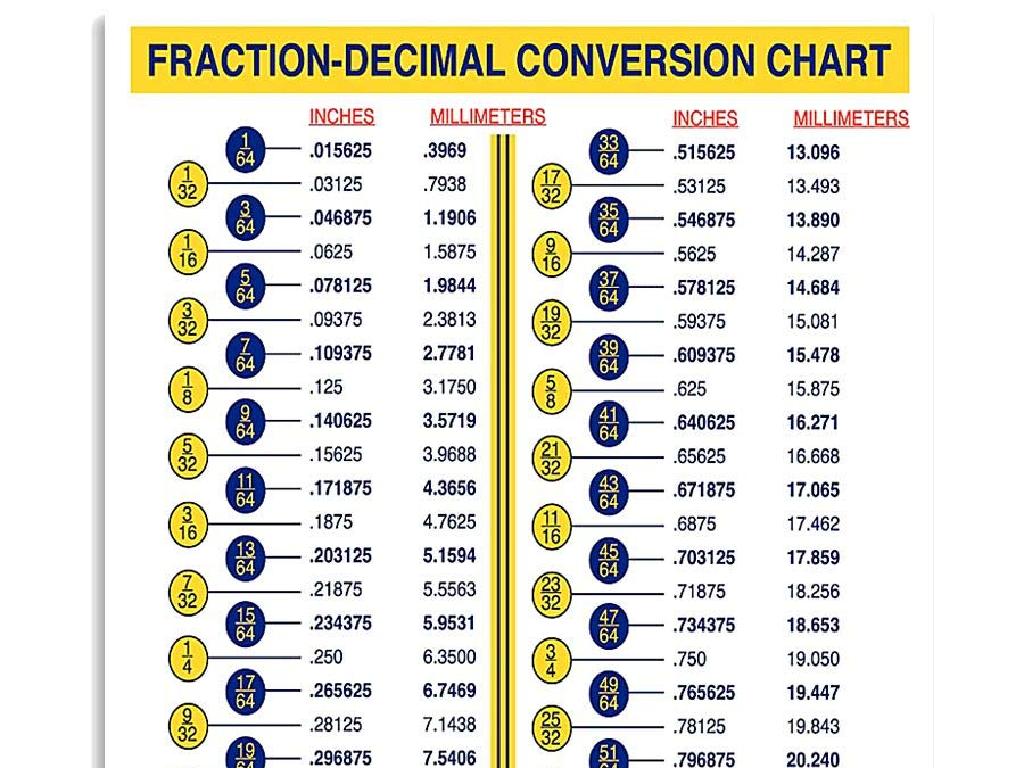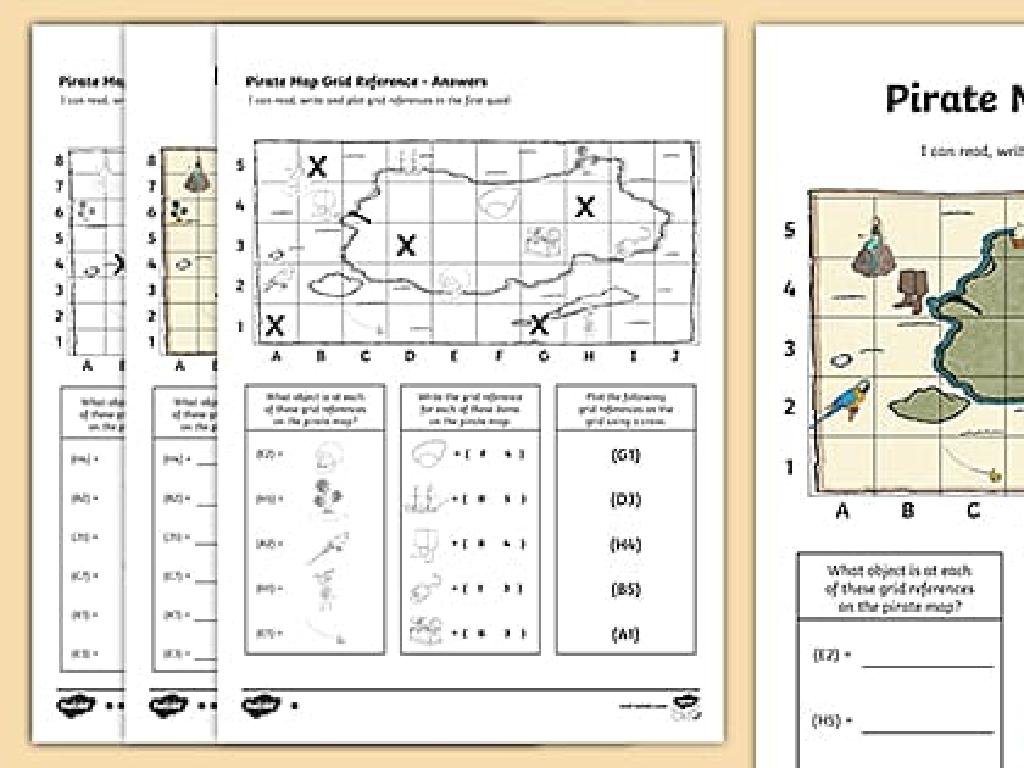Transversals Of Parallel Lines: Name Angle Pairs
Subject: Math
Grade: Seventh grade
Topic: Lines And Angles
Please LOG IN to download the presentation. Access is available to registered users only.
View More Content
Transversals of Parallel Lines: Angle Pairs
– Define transversal lines
– A line crossing two parallel lines
– Explore types of angle pairs
– Corresponding, alternate interior, alternate exterior, consecutive interior angles
– Real-life applications
– Architecture, engineering use these principles
– Practice identifying angles
– Use diagrams to find angle relationships
|
Begin with a definition of transversal lines, ensuring students can identify them in diagrams. Discuss the types of angle pairs formed when a transversal crosses parallel lines, such as corresponding angles, alternate interior and exterior angles, and consecutive interior angles. Provide real-world examples where these angle relationships are applied, like in the design of bridges or buildings. Encourage students to practice by identifying these angles in various diagrams. This will help them visualize and understand the concepts better, preparing them for more complex geometry problems.
Parallel Lines and Transversals
– Define parallel lines
– Lines in the same direction, never meeting
– Real-life examples
– Railroad tracks, notebook lines
– Significance in geometry
– Key concepts for understanding shapes
– Introduction to transversals
– A line crossing two parallel lines
|
This slide introduces the concept of parallel lines, which are lines that remain the same distance apart and never intersect. Provide students with relatable examples such as railroad tracks or lines in their notebooks to illustrate parallel lines in the real world. Emphasize the importance of understanding parallel lines as a foundational concept in geometry, which is crucial for studying shapes, angles, and proving theorems. Introduce the term ‘transversal’ as a line that crosses two parallel lines, setting the stage for discussing angle pairs and their properties in the context of parallel lines and transversals.
Transversals and Parallel Lines: Angle Pairs
– Define a transversal line
– A line crossing two or more lines
– Transversal with parallel lines
– When crossing parallel lines, angles with special relationships are created
– Special angles introduction
– Learn about corresponding, alternate interior, alternate exterior, and consecutive interior angles
– Naming angle pairs
|
This slide introduces the concept of a transversal line in geometry and its interaction with parallel lines. A transversal is a line that intersects two or more lines at distinct points. When those lines are parallel, the transversal creates several types of angles with unique properties, such as corresponding angles, alternate interior and exterior angles, and consecutive (same side) interior angles. Understanding these angle relationships is crucial for solving problems involving parallel lines and transversals. Encourage students to visualize these angles with real-world examples, such as railroad tracks or the edges of a book. The goal is for students to be able to identify and name these angle pairs when they see two parallel lines cut by a transversal.
Types of Angle Pairs with Transversals
– Corresponding Angles
– Angles in matching corners when lines are cut by a transversal
– Alternate Interior Angles
– Angles inside parallel lines on opposite sides of the transversal
– Alternate Exterior Angles
– Angles outside parallel lines on opposite sides of the transversal
– Consecutive Interior Angles
– Angles inside parallel lines on the same side of the transversal
|
This slide introduces students to the concept of angle pairs formed when a transversal cuts through two parallel lines. Corresponding angles are equal and are found in the same position at each intersection. Alternate interior angles are also equal and are located between the two lines but on opposite sides of the transversal. Alternate exterior angles, equal as well, are found outside the parallel lines but again on opposite sides of the transversal. Lastly, consecutive interior angles, which are supplementary, are found on the same side of the transversal and inside the parallel lines. Use diagrams to illustrate each type of angle pair and provide examples for students to identify and measure these angles in class.
Corresponding Angles in Parallel Lines
– Definition of corresponding angles
– Angles in matching corners when two lines are crossed by another (the transversal).
– Position in parallel lines
– They occupy the same relative position at each intersection where the transversal crosses the parallel lines.
– Corresponding angles are congruent
– When two lines are parallel, their corresponding angles are equal in measure.
– Significance in geometry
|
This slide introduces the concept of corresponding angles, which are pairs of angles that are in the same position relative to the two lines and the transversal that crosses them. Emphasize that for the angles to be corresponding, the lines must be parallel. When this condition is met, the corresponding angles are congruent, meaning they have the same measure. This is a fundamental property in geometry that helps in proving lines are parallel and solving for unknown angles. Use diagrams to visually demonstrate the position of corresponding angles and provide examples where students can practice identifying them. Encourage students to ask questions if they’re unsure about how to locate corresponding angles.
Alternate Interior Angles
– Location of alternate interior angles
– Between parallel lines, opposite transversal sides
– Equality in parallel lines
– When lines are parallel, these angles are congruent
– Example of alternate interior angles
– If lines a and b are parallel, angle 3 and angle 5 are equal
– Significance in geometry
|
This slide focuses on alternate interior angles, which are found between parallel lines and on opposite sides of a transversal. It’s crucial to emphasize that these angles are equal only when the lines are parallel, which is a key property in understanding geometric relationships. Provide an example, such as angles formed when two streets are crossed by an overhead pedestrian bridge, ensuring the concept is clear. Explain the significance of alternate interior angles in proving lines are parallel and solving for unknown angles. Encourage students to visualize and draw diagrams to better grasp the concept.
Alternate Exterior Angles
– Location of alternate exterior angles
– Outside parallel lines, opposite transversal sides
– Equality in parallel lines
– When lines are parallel, these angles are congruent
– Application in geometric proofs
– Used to show relationships in shapes
– Recognizing these angles
– Practice by identifying them in diagrams
|
This slide introduces the concept of alternate exterior angles, which are located outside parallel lines and on opposite sides of the transversal. It’s crucial to emphasize that these angles are equal (congruent) when the lines are parallel, which is a key property in understanding parallel line geometry. Students should learn how to apply this knowledge in geometric proofs and recognize these angles in various diagrams. Encourage students to practice by identifying alternate exterior angles in different geometric shapes and to understand their significance in proving lines are parallel.
Consecutive Interior Angles
– Located on same side of transversal
– Inside the parallel lines
– Sum equals 180 degrees
– e.g., if one angle is 110 degrees, the other is 70 degrees
– True when lines are parallel
|
Consecutive Interior Angles are a pair of angles that are on the same side of the transversal cutting across two parallel lines and are found between the parallel lines. When teaching this concept, emphasize that these angles are always inside the parallel lines and on the same side of the transversal. The key property to remember is that their measures add up to 180 degrees, which is a direct consequence of the lines being parallel. This is a fundamental concept in understanding parallel lines and transversals, and it’s important for students to be able to identify these angles and use them to solve problems involving parallel lines. Provide examples on the board and ask students to come up with their own, ensuring they understand the concept thoroughly.
Angle Pair Relationships
– Calculating angles with relationships
– Use equations to find missing angles based on known relationships
– Types of angle pairs
– Corresponding, alternate interior, alternate exterior, consecutive interior
– Practice problem examples
– Solve for x in given figures using angle relationships
– Strategies for solving problems
|
This slide introduces students to the concept of calculating unknown angles using established angle pair relationships when a transversal crosses parallel lines. Begin by explaining the types of angle pairs: corresponding angles, alternate interior angles, alternate exterior angles, and consecutive (same side) interior angles. Emphasize that these angles have specific relationships, such as being equal or supplementary. Provide practice problems where students can apply these relationships to find missing angles. Encourage students to set up equations based on these relationships to solve for unknown angles. During class, work through examples together and discuss strategies for identifying angle pairs and writing equations to solve for unknown values.
Real-World Applications of Transversals and Angles
– Architecture: Design and structure
– Buildings and bridges rely on angle pairs for stability.
– Urban planning: Street layouts
– City grids and road networks use parallel lines and transversals.
– Recognizing angle pairs in daily life
– Identifying congruent and supplementary angles around us.
– Practicality in design and navigation
– Use in creating efficient, aesthetic, and navigable spaces.
|
This slide aims to show students how the concepts of transversals and angle pairs they learn in class apply to real-world scenarios. In architecture, understanding angles is crucial for creating stable and aesthetically pleasing structures. Urban planning often involves street mapping, where transversals and parallel lines are used to design city grids and road networks. Encourage students to look for examples of angle pairs in their surroundings, such as in buildings, street intersections, and even in art. Discuss how these principles help in creating efficient and navigable spaces, and how they contribute to the functionality and beauty of our environment. This will help students appreciate the practicality of math in everyday life.
Class Activity: Angle Hunt
– Find angle pairs in school
– Measure angles with a protractor
Use a protractor to find exact angle measurements.
– Create a poster of real-life examples
Include photos or sketches of parallel lines and transversals found.
– Discuss findings with the class
|
This interactive class activity is designed to help students apply their knowledge of transversals and parallel lines in a practical setting. Students will search for real-world examples of angle pairs, such as corresponding, alternate interior, alternate exterior, and consecutive interior angles, within the school environment. They will then use a protractor to measure these angles, reinforcing their understanding of angle relationships. Following the exploration, students will create posters showcasing their findings with diagrams or pictures of parallel lines and transversals they’ve identified. Encourage creativity and accuracy in their representations. Conclude the activity with a class discussion where students can present their posters and reflect on the different types of angle pairs they found. This will solidify their understanding and allow them to see the practical applications of the concepts they’ve learned.
Conclusion & Homework: Angle Pairs
– Recap of transversals and parallel lines
– Homework: Angle pairs worksheet
– Complete the provided worksheet on angle pairs
– Identify angle pairs in diagrams
– Use context clues from today’s lesson to find corresponding, alternate, and co-interior angles
– Calculate angles using algebra
– Apply algebraic expressions to find unknown angles
|
As we conclude today’s lesson on transversals and parallel lines, ensure students have grasped the key concepts such as corresponding, alternate interior, alternate exterior, and co-interior angles. For homework, students will receive a worksheet that requires them to identify and calculate these angle pairs. This will reinforce their understanding and provide practice in applying algebra to geometry. Encourage students to refer to their notes from today’s lesson while completing the worksheet. In the next class, we will review the homework answers and clarify any misconceptions.





